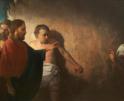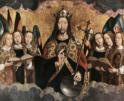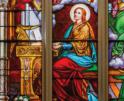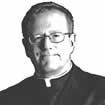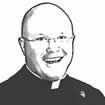
Faith
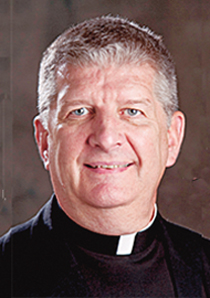
O’Grady
Occasionally, a bishop or priest is asked to pray at some ecclesial or civic event. He might use a favorite prayer from his memory, from a collection of prayers, or he might write one of his own. Being asked to compose a Eucharistic Prayer is a whole different scenario.
Our Eucharistic Prayer III resulted from a fraternal competition among members of one of the subcommittees tasked by Pope St. Paul VI to help him carry out the work of the renewal of the liturgy, which the Second Vatican Council had entrusted to him. Several sets of committee members gathered, and each wrote a Eucharistic Prayer. Then, the whole committee reviewed the six submissions and the base text of what is now Eucharistic Prayer III was chosen. Some further tweaking was needed, and it was submitted to the pope.
An aside about that process. You might read here and there that Pope St. Paul VI was duped into the liturgical reform. Honest reporting says the opposite. He took an active and personal interest, spent time reviewing the prayers sent to him, and there are extensive examples of his notations on his draft copies either suggesting, asking, or, in some cases, requiring a change. This prayer was reviewed by the pope and, following the revision process, was approved by its inclusion in the current Roman Missal.
My guess is that this is the second most popular Eucharistic Prayer used by bishops and priests.
It follows the pattern of Eucharistic Prayer II, but the authors also had Eucharistic Prayer I lingering in their minds and at hand.
The first thing is that, as with Eucharistic Prayer I, there is no proper preface. So, the celebrant must choose a preface from among the more than 70 available. His choice among the multiple prefaces is limited by the liturgical calendar. For example, there are several prefaces for the Christmas season and likewise several for the Easter season. Obviously, the celebrant may not use the Easter prefaces during Christmas, nor the reverse, ditto the Advent and Lenten seasons.
The great flexibility of this prayer, because it needs a preface, means that it is easily used throughout the year and on any occasion -- sacramental celebrations, saints, funerals, and Sunday and daily Masses.
Both because of its frequent use and its parallels to the Eucharistic Prayer II, this Eucharistic Prayer is easy to follow and to pray.
This prayer also has some differences from Eucharistic Prayer II. It has an extended commemoration of the church, where we mention the name of the present pope, the present diocesan bishop (and, as an option, auxiliary bishops if there are any).
As with other Eucharistic Prayers, there is also a commemoration of the saints. This prayer, unlike Eucharistic Prayer I and II, allows the insertion of the name or names of saints. Pope Francis added the name of St. Joseph to Eucharistic Prayers II, III, and IV, as Pope St. John XXIII had done for Eucharistic Prayer I even before the start of the Second Vatican Council.
Only this prayer of the four allows the insertion of names of saints. Here is the asterisked note found only in this prayer: *(with Saint N.: the Saint of the day or Patron Saint).
There is a commemoration of the dead, both a general one and one for Masses for the Dead. The most likely time you would hear this extended commemoration of the dead is at a funeral Mass.
That longer commemoration first "reminds" God that the deceased had been reborn in Holy Baptism, and having shared that likeness of Christ, the prayer then requests that God grant the deceased another share in Christ, that is in his resurrection. It is the most evident link between baptism and resurrection in the Eucharistic Prayers.
This prayer, with its great flexibility, also has possibilities for inserts related to celebrations. So, the celebrating priest could offer a special prayer for the newly baptized, the newly confirmed, the newly ordained, the newly married, those who receive the anointing of the sick at Mass, the newly professed religious, and others. These inserts are with the other Mass prayers for the respective occasion, and this requires the priest to know the location and wisely mark it in advance of the Mass with a ribbon. The flipping of pages can indeed be a distraction, but the beauty of the prayers and the opportunity to make this Holy Mass specific to those receiving other sacraments should not lightly be overlooked or omitted.
Because of its brevity -- shorter than Eucharistic Prayer I and only a bit longer than Eucharistic Prayer II -- this one is probably familiar to you. I suspect it is the favorite in most parishes for Sunday Masses.
Recent articles in the Faith & Family section
-
Our Lady of DeliveranceJaymie Stuart Wolfe
-
The 'month of the dead' brings its own strange refreshmentBishop Robert Reed
-
Make New Friends, But Keep the OldMaureen Crowley Heil
-
A royal truthScott Hahn
-
St. Cecilia and hope in sacred songRichard Clark


